
Indonesian literature is a term grouping various genres of South-East Asian literature.
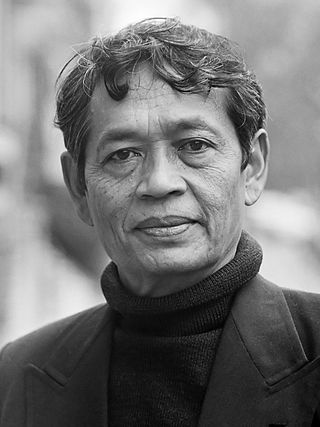
Mochtar Lubis was an Indonesian journalist and novelist who co-founded Indonesia Raya and monthly literary magazine Horison. His novel Senja di Jakarta was the first Indonesian novel to be translated into English. He was a critic of Sukarno and was imprisoned by him, as well as by Suharto on several later occasions. He held strong anti-leftist views and was seen by critics as aligned with military and pro-US forces that were opposed to Sukarno’s non-aligned policies, a charge that he himself denied.
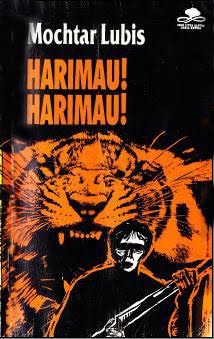
Harimau! Harimau! is an Indonesian novel written by Mochtar Lubis and originally published in 1975. Written in a Madiun prison as a response to Indonesians following President Sukarno's leadership without question, it tells the story of seven dammar collectors who are attacked by a tiger on their way back to their village and are unable to be saved by their charismatic leader. The book was critically acclaimed, receiving the Best Book award from the Indonesian Department of Education and Culture. It has been translated into English, Dutch and Mandarin.
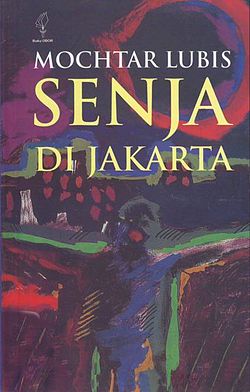
Senja di Jakarta is an Indonesian novel written by Mochtar Lubis and first published in English by Hutchinson & Co. in 1963, with a translation by Claire Holt. It was later published in Indonesian in 1970.

Azab dan Sengsara is a 1920 novel written by Merari Siregar and published by Balai Pustaka, Indonesia's major publisher at that time. It tells the story of two lovers, Amiruddin and Mariamin, who are unable to marry and eventually become miserable. It is generally considered the first modern Indonesian novel.
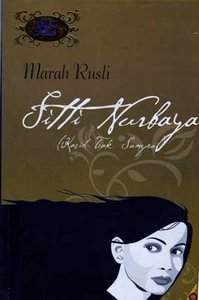
Sitti Nurbaya: Kasih Tak Sampai is an Indonesian novel by Marah Rusli. It was published by Balai Pustaka, the state-owned publisher and literary bureau of the Dutch East Indies, in 1922. The author was influenced by the cultures of the west Sumatran Minangkabau and the Dutch colonials, who had controlled Indonesia in various forms since the 17th century. Another influence may have been a negative experience within the author's family; after he had chosen a Sundanese woman to be his wife, Rusli's family brought him back to Padang and forced him to marry a Minangkabau woman chosen for him.
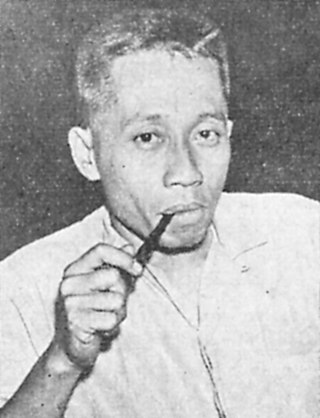
Trisnojuwono was an Indonesian author, journalist and former revolutionary and military man born in Yogyakarta, 12 November 1925. He died in Bandung, 29 October 1996. Much of his literary work is based on his experiences as Pemuda during the Indonesian National Revolution and includes many unique eye witness accounts of this chaotic and violent period.
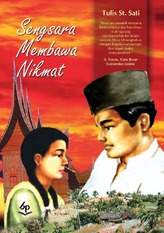
Sengsara Membawa Nikmat is an Indonesian novel written by Tulis Sutan Sati. It was published in 1929 by Balai Pustaka. It tells the story of Midun, the son of a farmer, who experiences many trials before finally living happily with his new wife. It has been noted as one of Sati's most interesting works.

Atheis is a 1949 Indonesian novel written by Achdiat Karta Mihardja and published by Balai Pustaka. The novel, using three narrative voices, details the rise and fall of Hasan, a young Muslim who is raised to be religious but winds up doubting his faith after dealings with his Marxist–Leninist childhood friend and an anarcho-nihilist writer.
Darah Muda is a 1927 novel written by Indonesian writer Djamaluddin Adinegoro and published by Balai Pustaka. It is one of few Indonesian novels from the period in which the protagonists succeed in love.

Dian jang Ta' Koendjoeng Padam is a 1932 novel by Sutan Takdir Alisjahbana. It was published by Balai Pustaka.
Asmara Djaja is a 1928 novel written by Indonesian writer Djamaluddin Adinegoro and published by Balai Pustaka. It is one of few Indonesian novels from the period in which the protagonists succeed in love.
"Soerabaja" is a work of fiction by Indonesian writer Idrus variously described as a novel, novelette, and long short story. It was published in 1946 or 1947.

Di Bawah Lindungan Ka'bah is the 1938 debut novel of the Indonesian author Haji Abdul Malik Karim Amrullah (1908–1981). Written while the author worked in Medan as the editor of an Islamic weekly magazine, the novel follows the doomed romance of a young Minang couple from different social backgrounds. Generally praised for its simple yet eloquent diction, the novel has been twice adapted into film, first in 1977 and then in 2011.

Tenggelamnja Kapal van der Wijck is an Indonesian serial and later novel by Haji Abdul Malik Karim Amrullah published in 1938. It follows the failed love between Zainuddin, a mixed-race man, and Hayati, a pure Minang woman.

Sariamin Ismail was the first female Indonesian novelist to be published in the Dutch East Indies. A teacher by trade, by the 1930s she had begun writing in newspapers; she published her first novel, Kalau Tak Untung, in 1933. She published two novels and several poetry anthologies afterwards, while continuing to teach and – between 1947 and 1949 – serving as a member of the regional representative body in Riau. Her literary works often dealt with star-crossed lovers and the role of fate, while her editorials were staunchly anti-polygamy. She was one of only a handful of Indonesian women authors to be published at all during the colonial period, alongside Fatimah Hasan Delais, Saadah Alim, Soewarsih Djojopoespito and a few others.

Kalau Ta' Oentoeng is a 1933 novel written by Sariamin Ismail under the pseudonym Selasih. It was the first Indonesian novel written by a woman. Written in a flowing style heavily dependent on letters, the novel tells the story of two childhood friends who fall in love but cannot be together. It was reportedly based on the author's own experiences. Although readings have generally focused on the novel's depiction of an "inexorable fate", feminist and postcolonial analyses have also been done.

Korrie Layun Rampan was an Indonesian novelist, short story writer, poet, literary critic, journalist, and politician.

Soeman Hasibuan better known by his pen name Soeman Hs, was an Indonesian author recognized for pioneering detective fiction and short story writing in the country's literature. Born in Bengkalis, Riau, Dutch East Indies, to a family of farmers, Soeman studied to become a teacher and, under the author Mohammad Kasim, a writer. He began working as a Malay-language teacher after completing normal school in 1923, first in Siak Sri Indrapura, Aceh, then in Pasir Pengaraian, Rokan Hulu, Riau. Around this time he began writing, publishing his first novel, Kasih Tak Terlarai, in 1929. In twelve years he published five novels, one short story collection, and thirty-five short stories and poems.
This City Is a Battlefield is an upcoming Indonesian war drama film written and directed by Mouly Surya. The film is adaptation of Jalan Tak Ada Ujung by Mochtar Lubis and is set in 1946, a year after Indonesia's independence from Dutch and Japanese occupation.















